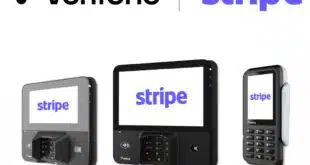American Express Co. is offering new rewards and benefits for using one of its prepaid cards, but at a cost.
The card brand and acquirer on Wednesday added a rewards program to its Serve card under the “Serve Cash Back” moniker. Serve Cash Back users, who pay $5.95 per month to participate, receive 1% cash back on all purchases, excluding ATM and online bill-pay transactions. AmEx would not explain further the financial details of how the program is funded. Users also receive free online bill-pay services, free direct deposit, and free withdrawals at MoneyPass ATMs.
“We identified a huge unmet need in prepaid: rewards products for prepaid customers are virtually non-existent,” an AmEx spokeswoman says. “Consumers are looking to stretch their budgets and get more from every dollar they spend. … Serve Cash Back is designed for customers seeking rewards when they spend on everyday items such as gas, groceries, and clothing.”
AmEx estimates that a consumer whose spending on a Serve card is in line with national averages for purchases like gasoline, dining out, groceries, clothing, transportation, and entertainment could receive more than $400 cash back annually. Example annual spending amounts are $2,418 for gasoline, $3,977 for dining out, and $6,602 on groceries. The cash back amount is added to the consumer’s Serve account for redemption on future purchases.
Whether Serve cardholders will see value in paying nearly $72 annually to get 1% cash back is a key question for AmEx, says Ben Jackson, director of the prepaid advisory service at consultancy Mercator Advisory Group.
“Two factors come into play,” Jackson says. “The first is whether the monthly fee can be waived under any conditions like a certain number of transactions, using direct deposits, or having a certain amount of loads,” he says via email to Digital Transactions News. “The second is whether or not things like [non-online] bill payments are counted for cash back transactions. If they are, then reaching at least a break-even threshold becomes a lot easier.” As it is, the card requires $7,200 in annual spending to break even.
But the overall AmEx strategy with this service is to compete in the debit market, Jackson says, where it does not have other products. “Rewards on debit cards mostly went away in the wake of the Durbin Amendment, so the rewards card may attract consumers who prefer debit and want rewards, but only if they feel they will earn more than they pay in fees.” The Durbin Amendment limited the interchange fees large issuers could collect from debit card transactions.
AmEx’s task will be to find the balance between fees and rewards that may drive more spend to the prepaid card, assuming the cardholders are calculating their spending so they earn more rewards, he says. “This way, American Express earns more in transactions fees. So American Express may be counting on its cardholders to do that math and make more card transactions than they would have otherwise,” Jackson says.
It may be, too, that the cash back amount may fluctuate, Jackson says, for certain merchant categories at certain times. “If that’s the case, then people may find it more attractive.”





